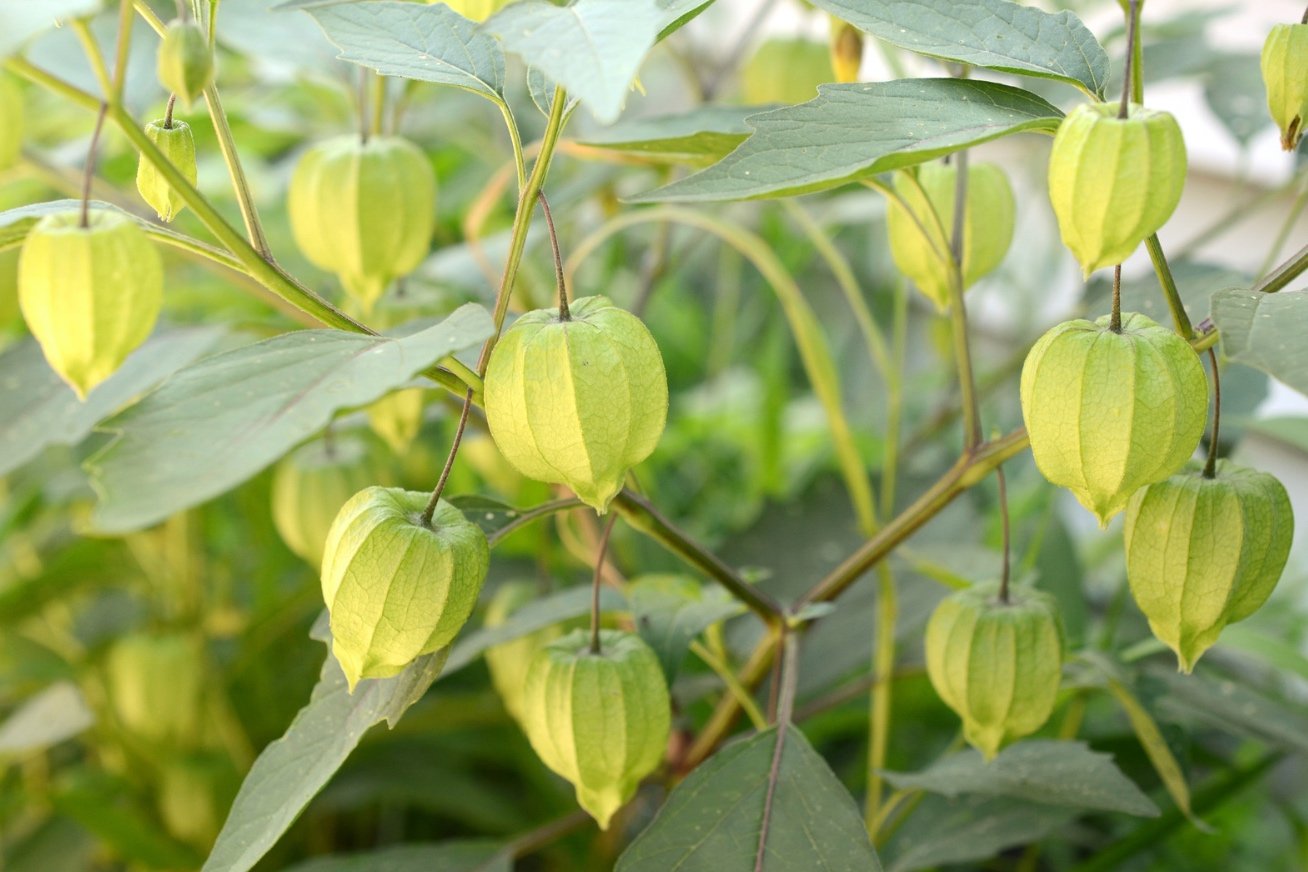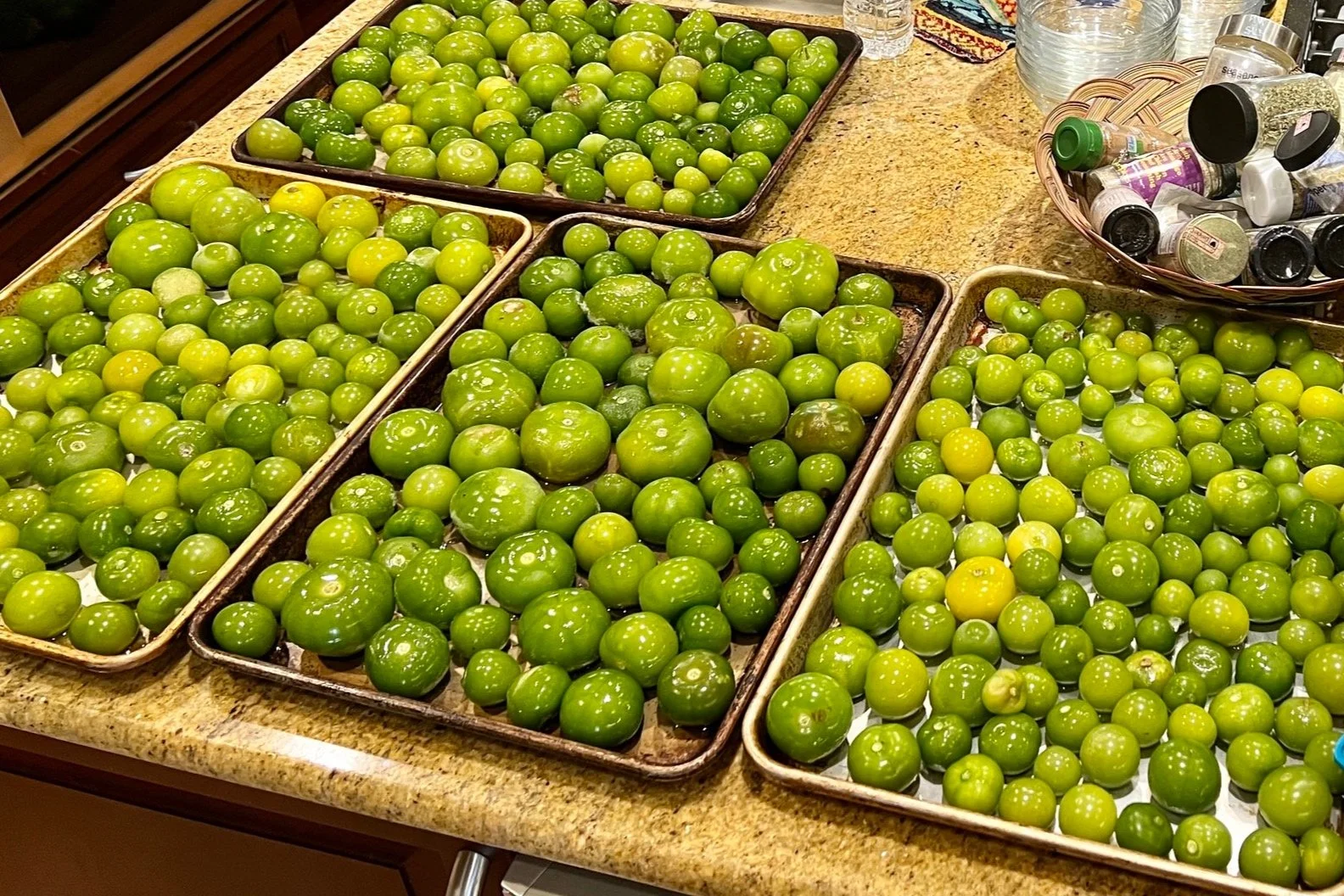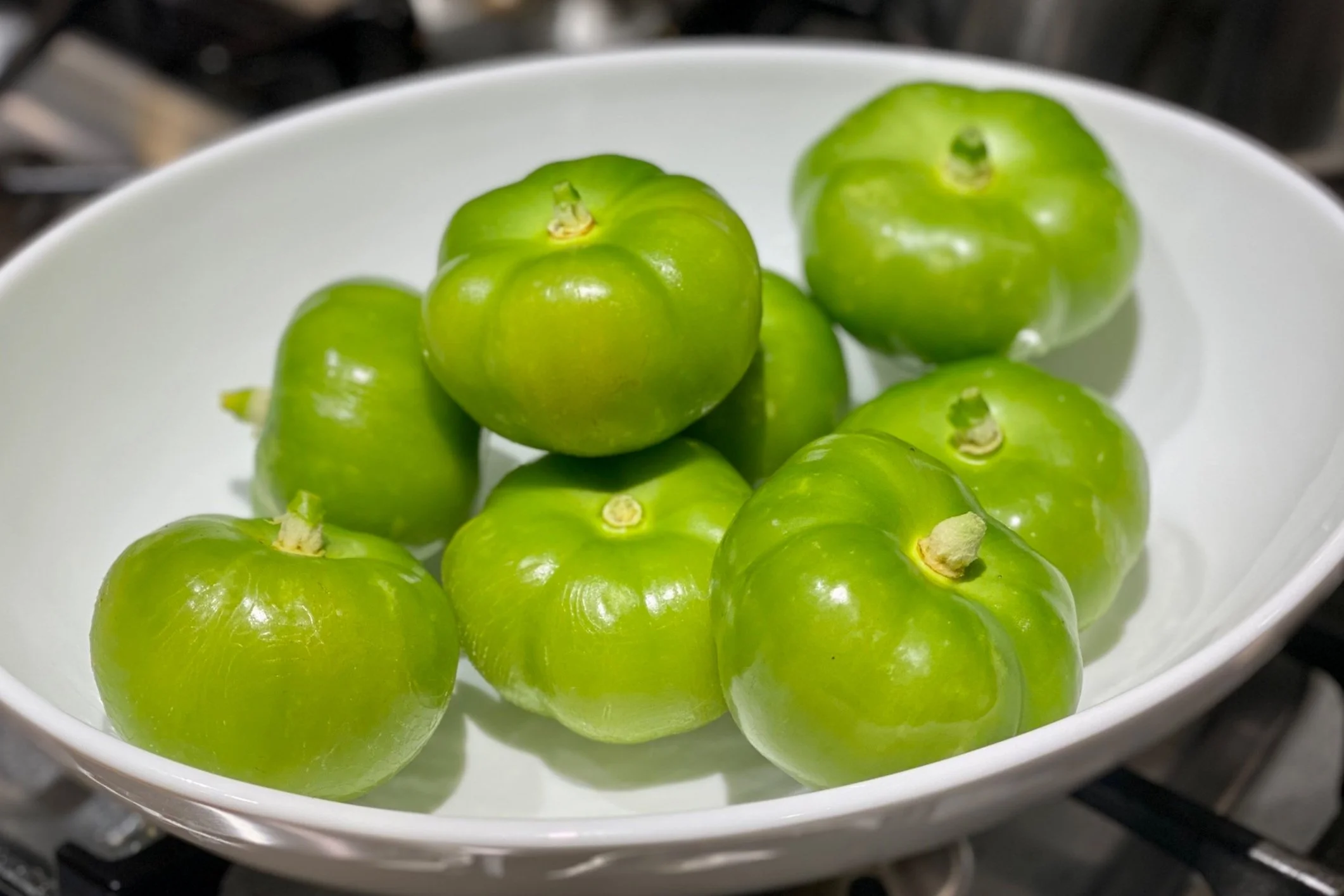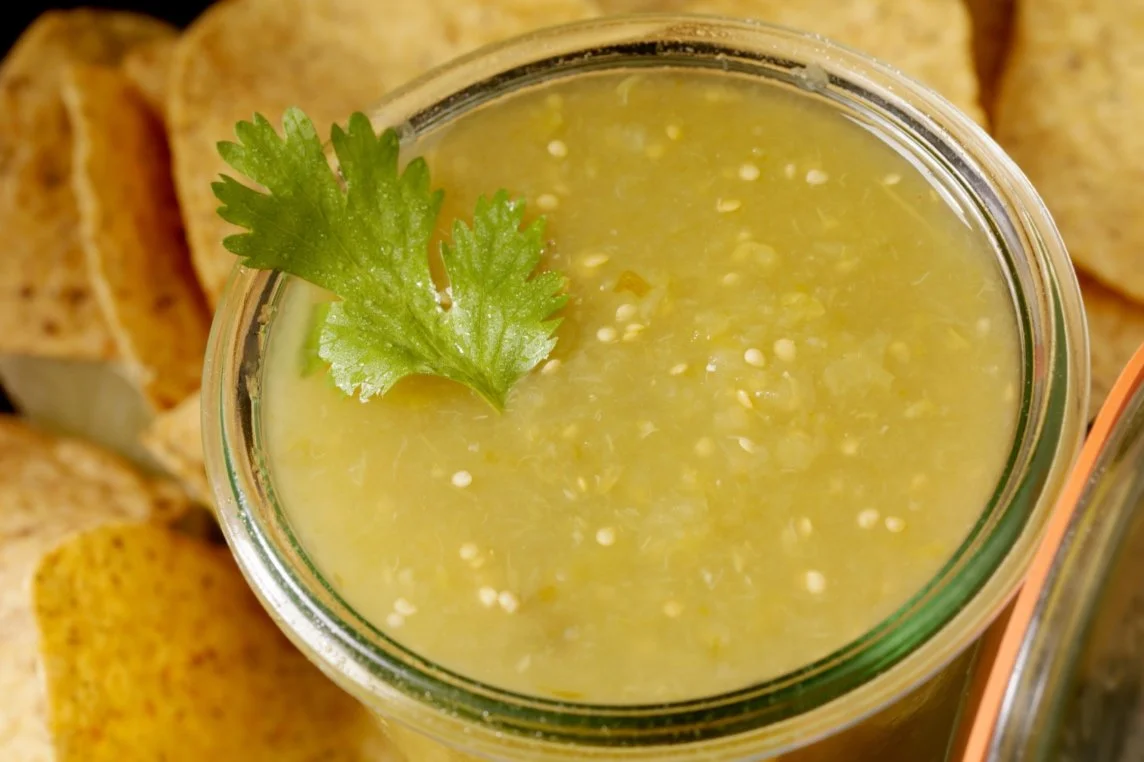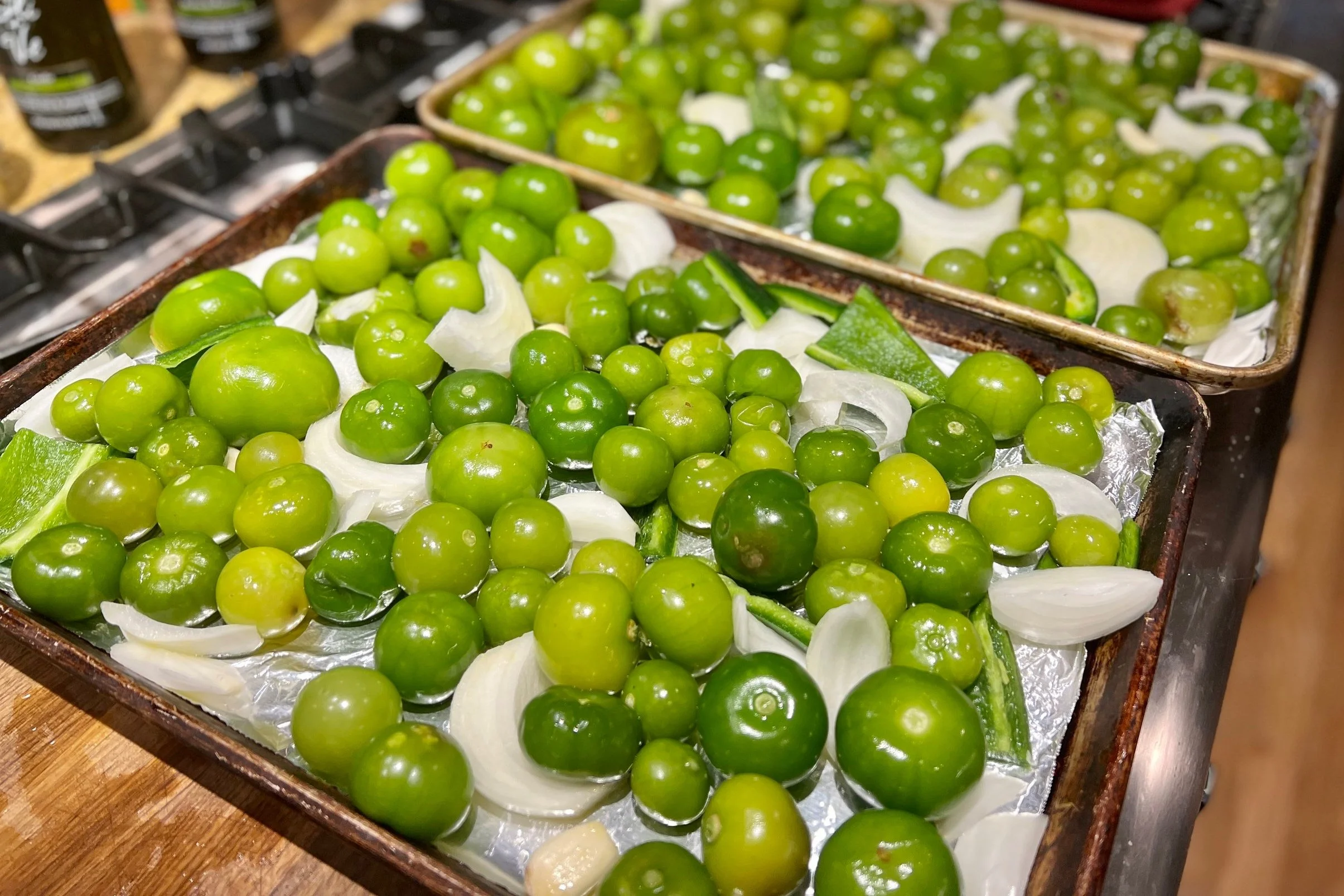Growing Tomatillos in the Southeast
Tomatillos are a girl’s (uh, gardener’s) best friend. And they’re actually almost easier to grow than tomatoes. Tomatillos are smaller than tomatoes, grow more quickly and produce tons. Plus you don’t have to peel them before cooking!
Tomatillos like full sun and well-drained soil. You can start them indoors from seed about 6 weeks before your last frost date. You can also plant seedlings from a nursery or grower once all chance of frost has past or try direct sowing seeds into your garden.
Tomatillo plants can get up to 5 feet tall (or more), so tying the vines to a trellis works really well.
There are several different varieties of tomatillos to choose from - all with varying tastes. Tomatillo Verde is the classic for use in salsas and enchilada sauces - and my favorite to grow. But there’s also Cossack Pineapple that’s sweet and fruity, and De Milpa which has a stronger and sharper flavor. Then there are purple varieties (which are even sweeter than the green ones).
When planting your tomatillos, be sure to space them AT LEAST 24 inches apart. I’ve found that planting them about 36 inches apart is actually better because they tend to sprawl - like everywhere. Also you’ll likely only need to plant 2 to 4 plants (you need at least 2 because tomatillos aren’t self-pollinating). I learned the hard way and planted 8 one year - which is WAY too many for any small garden to handle.
Add some compost to your soil, water regularly (but not too much) and keep your eye out for pests. If pests do find their way to your plants, try spraying them with a mixture of Dr. Bronner’s Castile Soap and water.
Tomatillos should be ready for harvest between 60 and 85 days after planting. Your plants will continue to produce fruit until the first frost kills them. Keep picking the fruit as they ripen to encourage more production.
Tomatillos are ripe when the husks are just starting to dry out and the fruit fills the husk. If the husks are super dry and the fruit is yellow, you’ve waited a little too long. If the husks are loose and the fruit is small and hard, they’re not ready yet.
Once you’ve picked your tomatillos, gently remove the husks and rinse them lightly under warm water. Then they’ll be ready to use in your favorite recipes like salsa verde enchiladas, green salsa, roasted tomatillos, tomatillo chicken and chicken pozole (just to name a few). But remember what I said about planting too many plants - LOL
Tomatillos are high in fiber and low in fat. They contain vitamins C, A and K, as well as niacin, potassium, manganese and magnesium. Tomatillos contain antioxidant phytochemical compounds called withanolides which also have anti-inflammatory properties.
Just remember, like tomatoes - tomatillos are a member of the nightshade family. For most of us, the nutritional benefits of the fruits and veggies that are considered nightshades outweigh any costs. But if you’re sensitive to nightshades, go easy until you’re able to improve your tolerance.
One of the simplest ways to use tomatillos is by making Salsa Verde. You can find my favorite recipe in My Kickin’ Kitchen {HERE}.
Another easy way to use up those little green gems is to roast them with some onions and garlic. Just mix the tomatillos, onions and garlic with a little olive oil, sea salt and fresh ground pepper, spread them out on a baking sheet and roast for about 30 minutes at 400 degrees Fahrenheit (rotating the baking sheet as needed). You can then use the roasted tomatillos in salsa or sauces.
Here’s a great recipe for Green Enchilada Sauce. And here’s a few more recipes you might like to try - Tomatillo Chicken and Chicken Pozole Verde.
So now you know a little bit more than you did before about tomatillos. I hope you’ll give them a try in your garden!
And if you’re looking for other fruits and veggies with huge health benefits that you can add to your garden, join my email list and get your FREE downloadable PDF guide to 24 Inflammation Fighting Foods You Can Grow Yourself.

